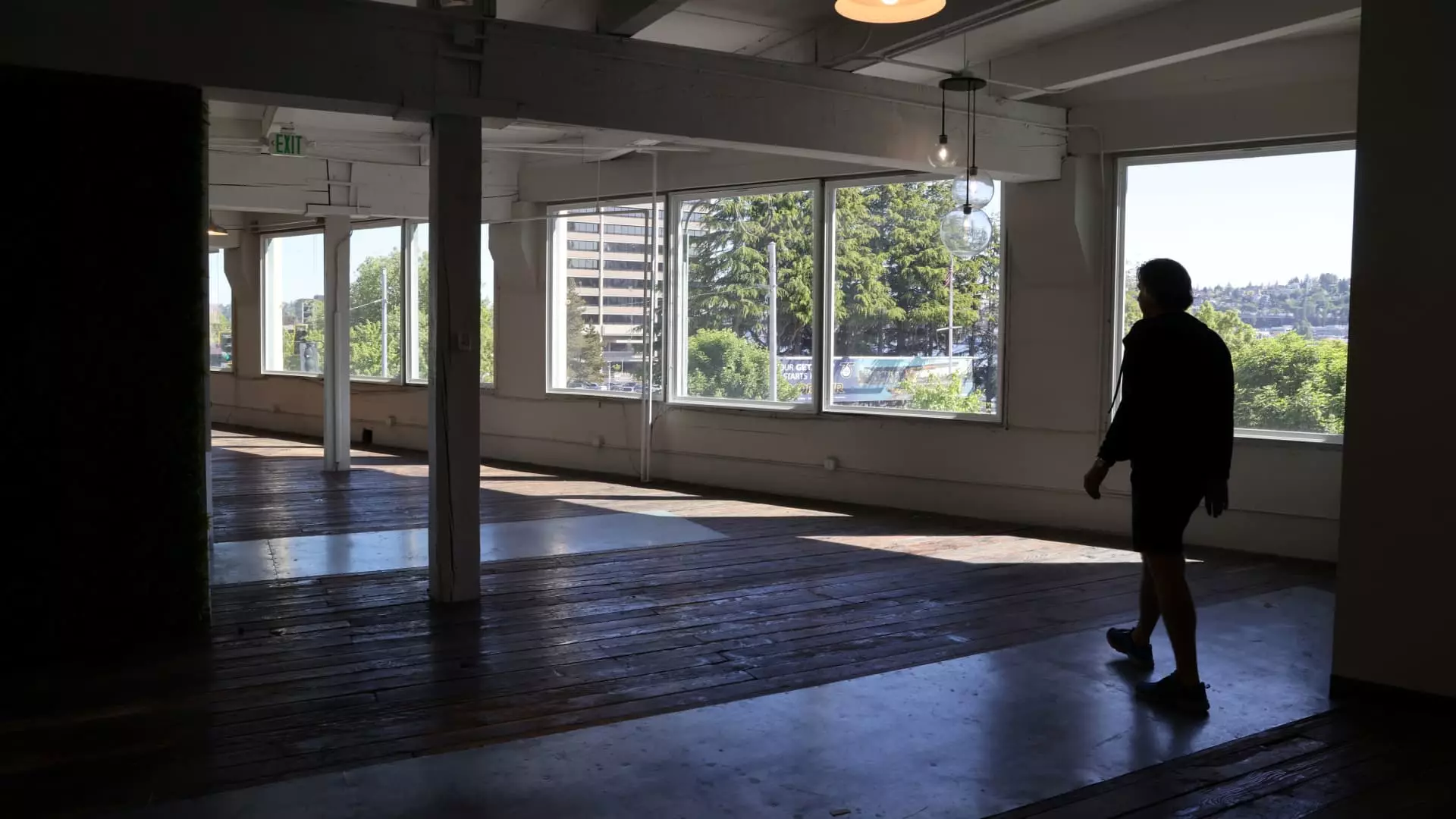The U.S. office market has entered a watershed moment, marked by an alarming trend: for the first time in over two decades, we are witnessing more office spaces being demolished or converted than constructed. This is not merely a statistic; it’s a seismic shift reflecting deeper societal changes that will redefine our urban centers for years to come. For so long, the narrative surrounding commercial real estate has been one of unyielding growth and boundless expansion. However, this year’s figures unearth a stark turnaround, with 23.3 million square feet of office space poised for demolition or conversion against a mere 12.7 million square feet slated for completion.
The moment calls for serious introspection about the nature and future of work. This transformation has been catalyzed principally by the explosion of remote work culture that emerged in the wake of the pandemic, fundamentally altering how businesses and employees interact with physical office spaces. To many, this shift spells disaster; to others, it prophesies renewal. The reality is far more complex, blending elements of both opportunity and constraint.
What Lies Beneath the Surface of Vacancy Rates?
While current office vacancy rates sit alarmingly at around 19%, the narrative of despair appears to be evolving. The fact that net absorption of office spaces has turned positive after six consecutive quarters of decline provides a glimmer of hope amidst the chaos. Organizations are increasingly transitioning back to in-person work, driven by a tightening labor market. However, this uptick does not necessarily translate to a revival of the traditional office as it once was; rather, it’s a patchwork of adaptability, compensating for the seismic tremors that the pandemic has induced.
The disconnect lies in the perception of what a productive workspace looks like. As companies scramble to adapt to a new cultural ethos prioritizing flexibility, convenience, and even hybrid arrangements, we must ask ourselves: are we genuinely moving towards improvement, or are we merely salvaging remnants of a bygone era? The reduction of office space, while ostensibly beneficial for landlords, raises questions about the long-term viability of office environments that rely on outdated formulas for productivity.
Who Wins, Who Loses? The Corporate Reckoning
Entities like Vornado and BXP find themselves among those reaping benefits from this evolving landscape, thriving in a niche of high-class office environments. This dynamic underscores a fundamental truth about the real estate market: quality trumps quantity. Yet, one must ponder the fate of less advantageous properties, many of which face the grim prospect of abandonment or obsolescence. The conversion of office spaces to residential units, yielding around 33,000 new housing options since 2016, is indeed a potential lifeline for certain neighborhoods. However, the practicality of this strategy must also be scrutinized.
Will the architectural integrity and essence of our cities be preserved amid this rush to transform spaces? As we look ahead towards the 85 million square feet of office space earmarked for future conversion, we must ask: are these plans sustainable, or are they merely a stopgap solution to a more significant urban crisis? The challenges of construction costs and dwindling appropriate buildings for conversion will continually confront developers and urban planners alike.
The Future: A Landscape in Flux
The U.S. office market is at a crossroads. The rise of remote work has fundamentally altered the fabric of our work culture, introducing an era characterized by uncertainty and hybrid models. Office space may no longer hold the same allure as it once did, forcing us to reconsider what it means to have a place of work. It is a make-or-break moment for commercial real estate stakeholders; the choices made today will echo into an uncertain future.
While it may appear that we are on the cusp of reinvention and revitalization, this transformation should not be undertaken lightly. We must remain vigilant and thoughtful as we reshape our urban environments—transforming not just the physical spaces but also how we define community, collaboration, and productivity in a rapidly evolving world. The office may not die, but it will certainly not thrive without introspection and innovation.

Leave a Reply